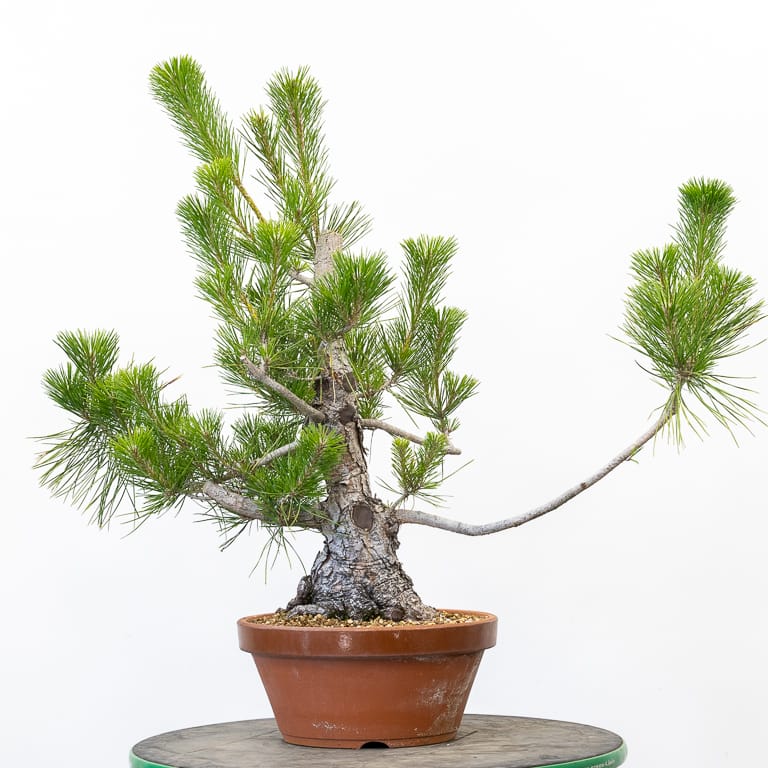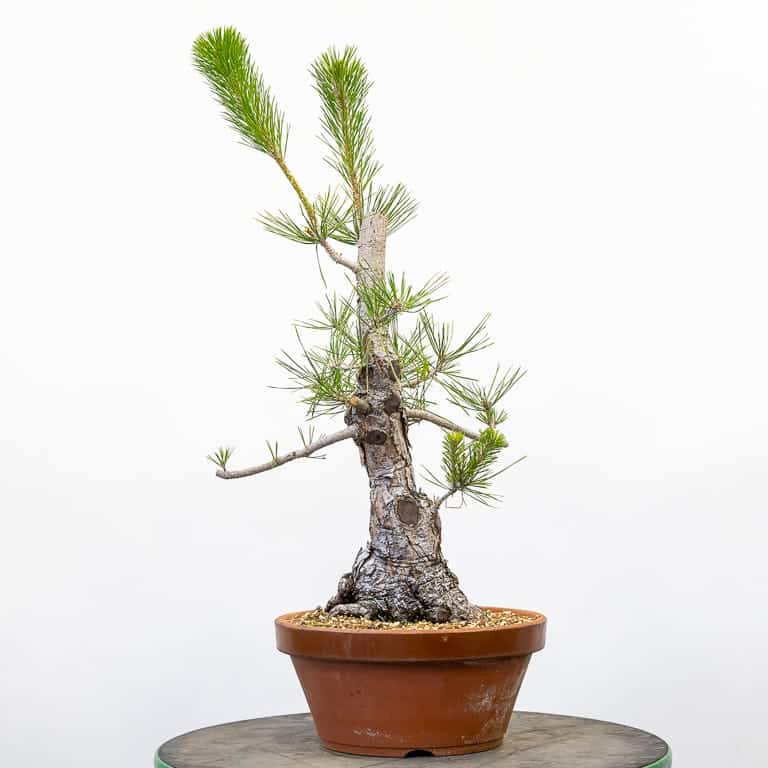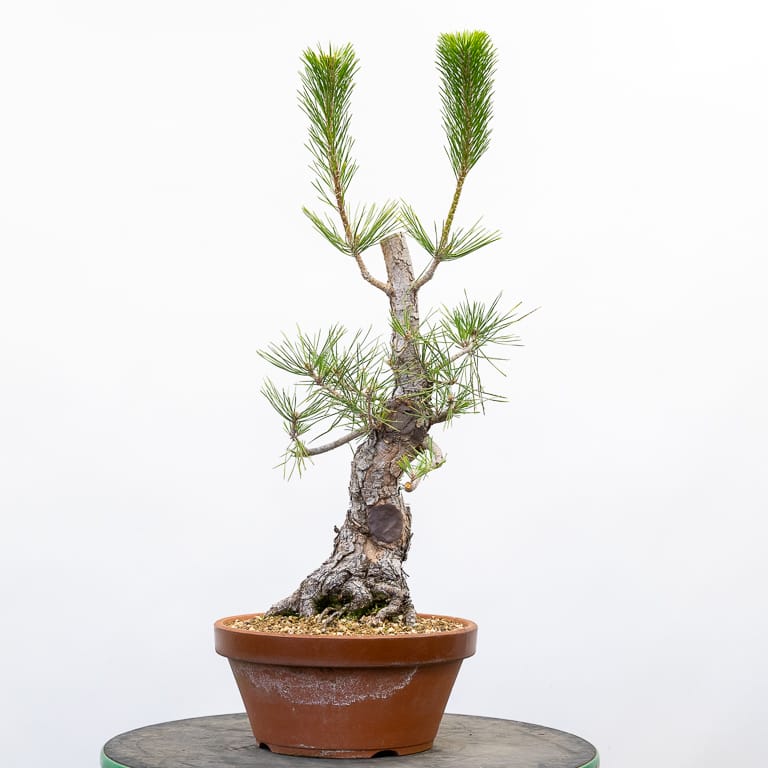I was happy to start working on a field-grown pine earlier this week. Long spring candles and healthy green needles suggested that the tree was strong enough to decandle, so the work started there (thanks for the help, Max!).
We also removed some branches that were too large to use in the final design. Here’s the tree before and after this work (see “Decandling” for an introduction to the topic).

Field-grown black pine

After cutback and decandling
I left two shoots at the top of the tree to maintain sap flow in case I need to graft new branches on the back side of the trunk. Although the tree is currently 27″ tall, the final bonsai will be closer to 14″.
Reducing the foliage made it easier to see the trunk so we were able to identify a candidate front.

New front
The root base isn’t as wide from this side, but the trunk movement is better. We may revisit this decision down the road based on how the roots and branches develop, but for now we have a target to work towards.
I’ll hold off on fertilizing the tree for a month or two but will plan to fertilize heavily in fall. In the meantime, I’ll keep the tree in full sun and watch the watering carefully (recently decandled trees typically require less water than they did before decandling).
Subscribe to Bonsai Tonight
New Posts Delivered Every Tuesday and Friday
Tino Mikosch says
Is this a singele flush or multi flush pine? Asking because I wouldn’t dare take so many needles off my Austrian black pine. Correct?
Jonas Dupuich says
Hi Tino – I don’t use these terms much, but you can expect another flush of growth after decandling Japanese black pines in spring. You are correct that this technique doesn’t apply to Austrian black pines. Thanks!
Paolo says
Hi, nice prebonsai but I wonder why the lower crossing branches were allowed to grow? Why to stop fertiliser, at this stage are you targeting needle length or ramification? When will you completely remove the sacrifice branch and pick a new one?
Thank you.
Jonas Dupuich says
Hi Paolo! I have no idea why the lower branches were allowed to run – my guess is that the tree was wasn’t maintained in the growing field. I stopped fertilizer to reduce the amount the new shoots will elongate over summer (the goal at this stage is ramification). I’ll remove the top of the tree when I have all of the branches I need below and when some of the larger wounds have healed.
Chris Neale says
Keep the decandling articles coming! Great information !
My JBP made about 90% small, weak candles that turned into small, nice looking little bundles with no neck by the end of May. I only took off the stronger candles with definite neck. Since this is the third season out of a rough quarantine, I decided to stay on the conservative side. I hope it was the right decision.
Chris
Jonas Dupuich says
Thanks Chris! It sounds like you made a good decision. There’s no benefit beyond needle length for skipping the decandling as the internodes will remain short. Decandling makes the most sense when the tree is healthy and the internodes are long.
A G says
Hello. With the reductio in height, can you give a summary of what you are looking for to be able to do the trunck chop safely after your cut wounds have healed? Lots of needles under the chop location or does it not matter? Time of year important?
Thanks
AG
Jonas Dupuich says
Hi AG! There are two things I look for before reducing the trunk: branches of an adequate size near the future apex (I don’t like cutting back to branches under 1/4″); and wounds that are well on their way to closing. Sacrifice branches are great for healing large wounds, and as this tree has several, I want to let at least one branch grow freely to speed up the callus production.
I’ve made large cuts at different times of the year. If I cut in fall or winter, I leave a stub. If I cut in late winter/early spring or in the middle of the growing season (now), I’ll reduce the trunk or branch completely so the healing can begin.
These are great questions – will plan to write more on both topics. Thanks!
Hector says
I have a JBP that is in the thickening trunk phase. Is it recommended to decandle? Can I decandle everything but one shoot to keep the tree growing but start some ramification on the lower part?
Jonas Dupuich says
Hi Hector! In general, no, I don’t recommend decandling when you want the trunk to grow thicker. The main exception is if you want to create ramification somewhere before continuing thickening the trunk. Decandling everything but one branch is OK, but it won’t thicken the tree very much until the one shoot becomes pretty big.
Feel free to post a photo of the tree to the forum and I can make a better reccomendation: https://ask.bonsaitonight.com/